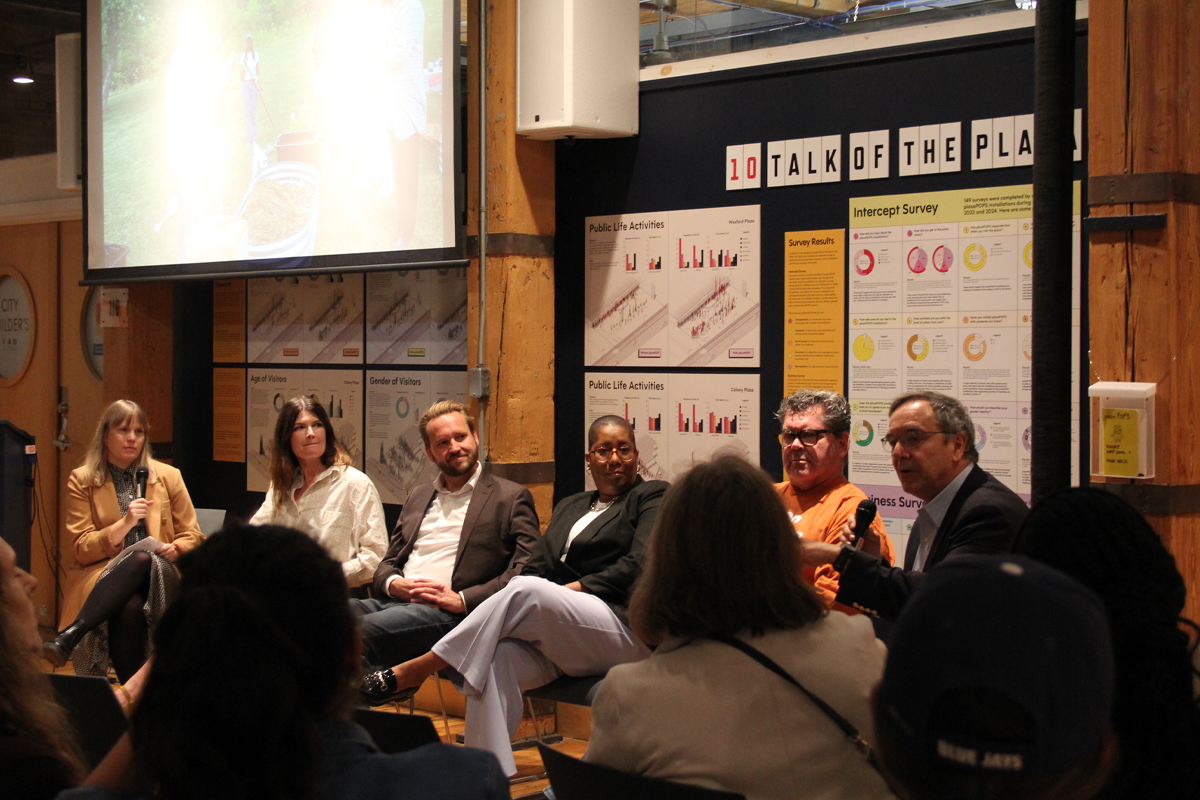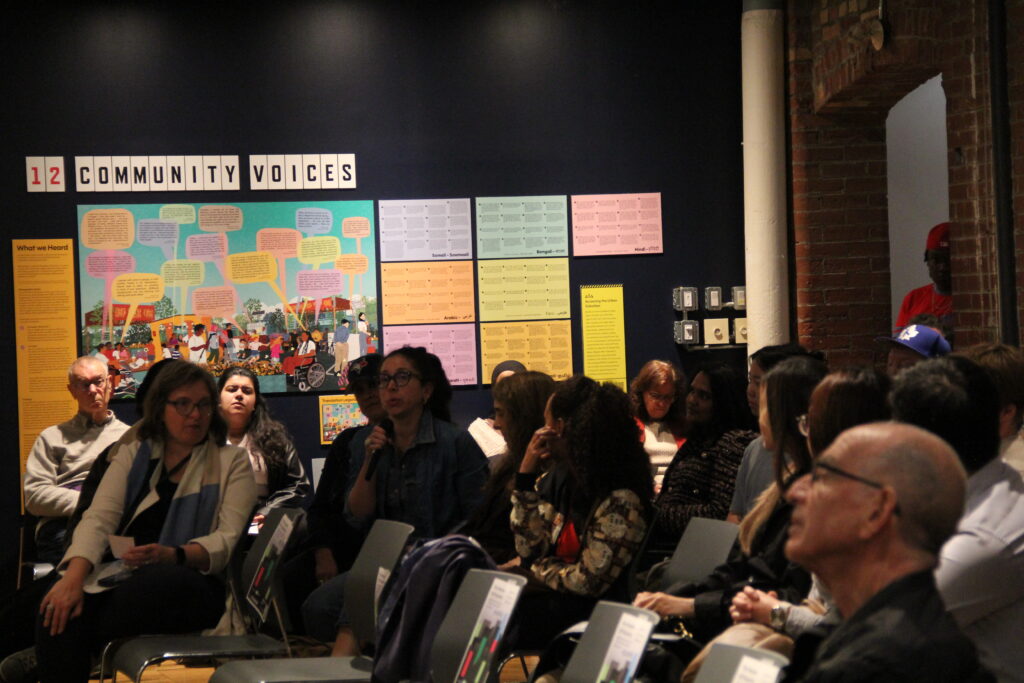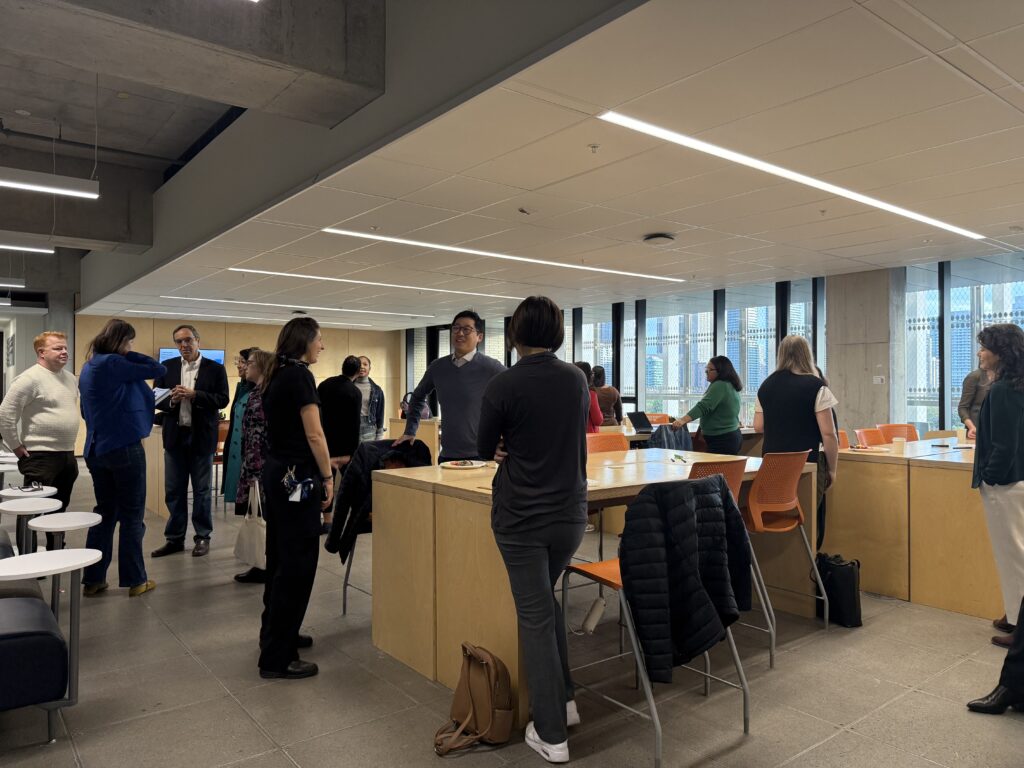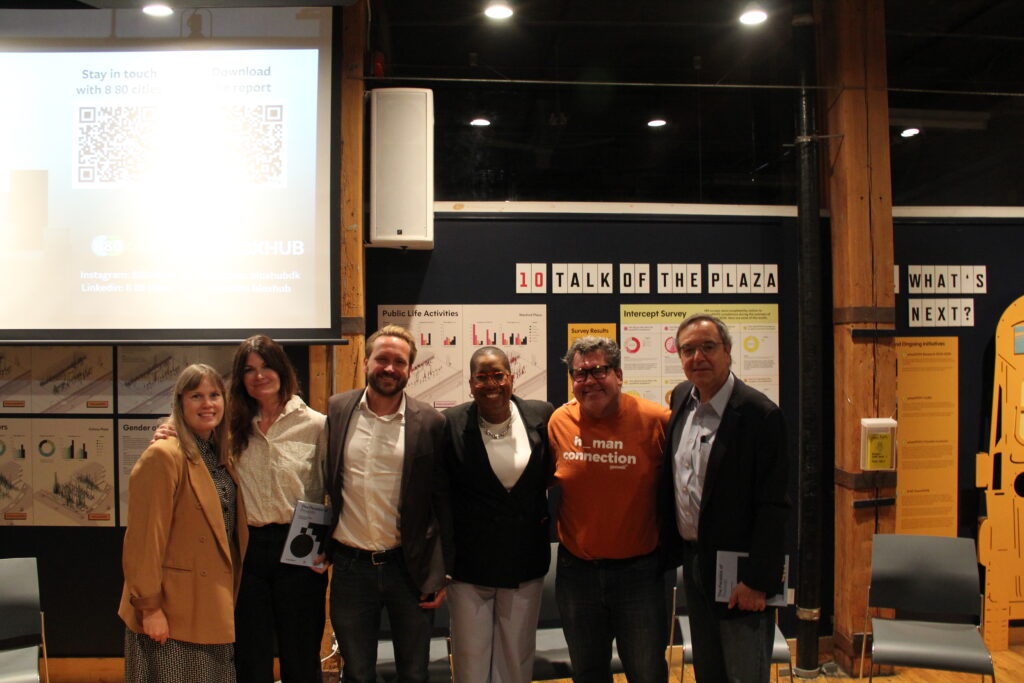
29 Oct The Paradox of Proximity: Building Connection in Toronto
By Aysha Teja, 8 80 Cities Collaborator
This Fall, 8 80 Cities and BLOXHUB, Denmark’s Nordic hub for sustainable urbanism, teamed up to explore a simple but timely question: Why do people in cities designed for proximity still feel so disconnected, and what can we do about it?
Through a public panel and a City Builders Breakfast, we brought together leaders from government, community organizations, foundations, and industry to explore how cities like Toronto can design both the spaces and the social conditions that make connection possible.

Panel Q&A with the audience
Understanding the Challenge
Participants agreed that Toronto shares many of the same challenges as cities around the world.
Rising housing costs push people farther from where they work and socialize. Public spaces exist, but often feel underused or transactional. Many residents are unaware of what’s happening nearby or how to get involved. And in our day-to-day lives, habits like wearing headphones or prioritizing hustle over community make it easier to stay in our own bubbles.
These dynamics form what BLOXHUB calls “the paradox of proximity” — people living close together, yet feeling far apart.

City Builders Breakfast
The Opportunity in What We Already Have
Across both gatherings, one theme emerged clearly: we already have what we need to start rebuilding connections. The challenge is coordinating and activating it.
At the public panel, Pete Bombaci (GenWell) reminded us that face-to-face contact is the foundation of social health. Gil Penalosa (Cities 4 Everyone) spoke to the power of neighbourhood-level programming that allows people to see the same faces, again and again. And Racquel Bremmer (Black Health and Social Service Hub) shared a powerful example from their community garden project, which not only improved health outcomes but brought generations together — reconnecting people to their heritage, and to one another, through the deep stories of grief and presence.
The next morning, the City Builders Breakfast carried these insights forward. Participants explored how to make connection a practical goal of city building through partnerships, programming, and design choices that invite people to linger, participate, and belong.

Left to right: Amanda O’Rourke (8 80 Cities), Ann-Britt Andersen & Jakob Norman-Hansen (BLOXHUB), Racquel Bremmer (Black Health and Social Service Hub), Pete Bombaci (GenWell), and Gil Penalosa (Cities 4 Everyone & 8 80 Cities Founder and Chair).
Moving from Assets to Action
What we heard across both days was hopeful: Toronto doesn’t need to start from scratch. The ingredients for connection already exist in our libraries, parks, community centres, and even condo common rooms. The next step is bringing people and sectors together to make those spaces come alive with intention and care.
Because connection isn’t something we can build alone — it’s something we create together.
Learn more: Explore BLOXHUB’s Paradox of Proximity book for global examples of how cities are tackling urban loneliness, and stay tuned for upcoming 8 80 Cities projects exploring how Toronto can turn proximity into connection.



